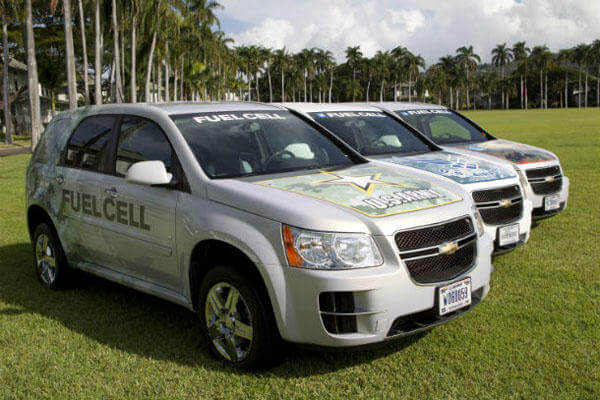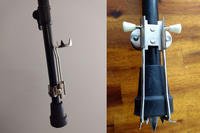This article was sponsored by General Motors.
Last winter, the U.S. Army unveiled a fleet of 16 hydrogen fuel-cell vehicles provided by General Motors that the military services in Hawaii are testing in an effort to research efficient, clean and renewable energy sources, and reduce the U.S. military's dependence on petroleum.
"The Army continues to investigate technologies and partnerships that give the United States a decisive advantage," said Lt. Gen. Francis J. Wiercinski, commanding general of U.S. Army Pacific. "These fuel-cell vehicles will help move the U.S. Army in the Pacific toward a sustainable path that reduces energy security challenges and strengthens our energy independence."
"Operating these vehicles will provide the military with the necessary data and experience to determine future applications of fuel-cell technology," said Charles Freese, GM executive director of Global Fuel Cell Activities.
During a ceremony at historic Palm Circle at Fort Shafter, Hawaii, that marked the kickoff of the project, officials from the services -- U.S. Army, Pacific, U.S. Pacific Fleet, U.S. Pacific Air Forces and U.S. Marine Corps Forces, Pacific -- government leaders, including U.S. Sen. Daniel Inouye, Lt. Gov. Brian Schatz and Honolulu Mayor Peter Carlisle, and industry partners demonstrated the use of the 16 hydrogen fuel-cell vehicles.
The zero-emission vehicles, funded by the Army Tank Automotive Research, Development and Engineering Center, or TARDEC, Office of Naval Research and Air Force Research Laboratories, are being tested in Hawaii's ideal climate for real-world conditions reflecting each service's needs.
"Our pursuit of alternative energy is closely tied to our commitment to continually adapt to an ever-changing security environment," said George Ka'iliwai, director of resources and assessment for U.S. Pacific Command. "Defense relationships and military approaches alone can't solve all of our energy challenges, but they underpin the initiatives we're taking within the Department of Defense to reduce the dependence on foreign sources of energy."
The military fleet of hydrogen fuel-cell vehicles serves as the test platform powered by renewable hydrogen, travels up to 200 miles on a single charge, refuels in five minutes and produces zero emissions.
"The test data collected will be analyzed to make fuel-cell technology practical in future operational platforms," said James Muldoon, science officer, U.S. Army Pacific.
"The development of fuel-cell vehicles and an associated transportation infrastructure on which new military and civilian fleets can be tested and employed will reduce our dependence on foreign oil and help move our state and country forward," Inouye said. "Hawaii is uniquely situated to benefit from the shift toward electric and fuel-cell vehicles."
The Army actively seeks and supports industry partnerships to increase compatible renewable energy development. Fielding of military fuel-cell vehicles with the Army, Navy, Air Force and Marines is the latest effort of the Hawaii Hydrogen Initiative, a partnership among 13 agencies, companies and universities. More information on the initiative can be found at www.hydrogen2hawaii.com.
"Once the key hydrogen infrastructure elements are proven in Hawaii, other states can adopt a similar approach," said Charles Freese, executive director of global fuel-cell activities for General Motors, a founding partner of the Hawaii Hydrogen Initiative. "The military is paving the way, demonstrating the practicality and applicability of this technology."
For more on GM and its contributions to the U.S. military throughout history, visit the GM Military History page.
Find the Right Veteran Job
Whether you want to polish your resume, find veteran job fairs in your area or connect with employers looking to hire veterans, Military.com can help. Subscribe to Military.com to have job postings, guides and advice, and more delivered directly to your inbox.











